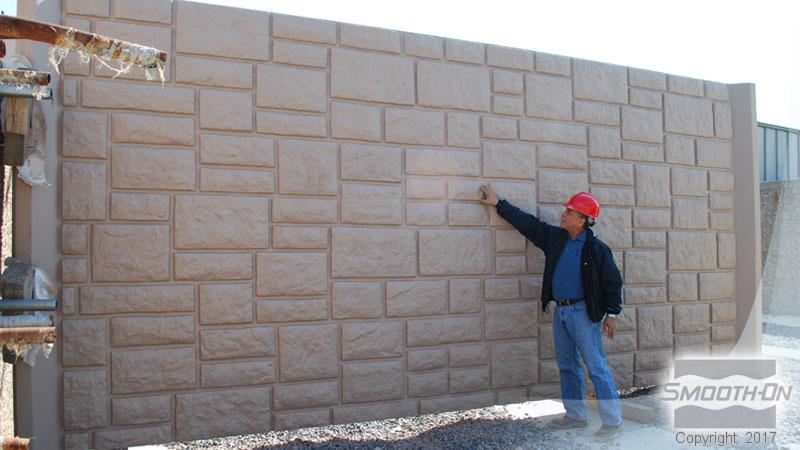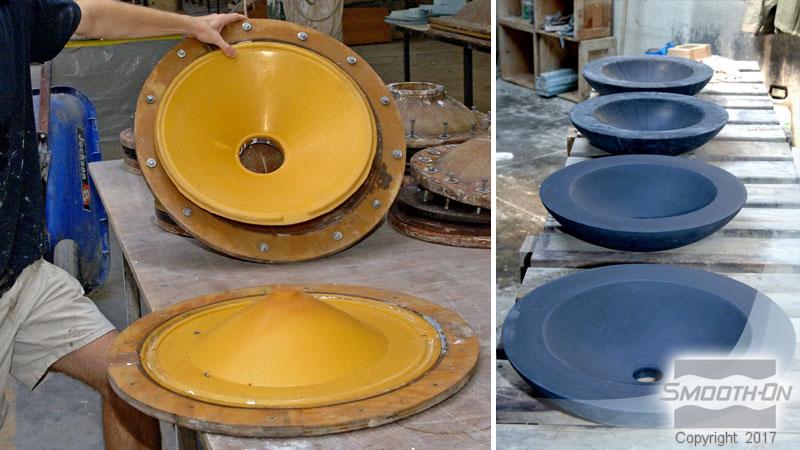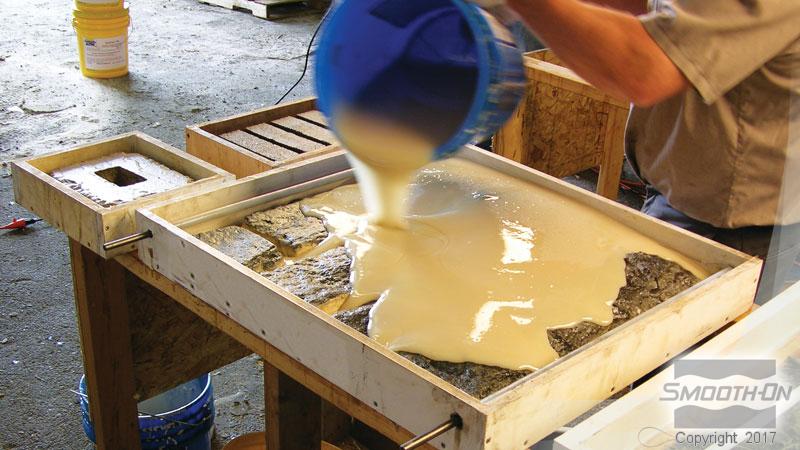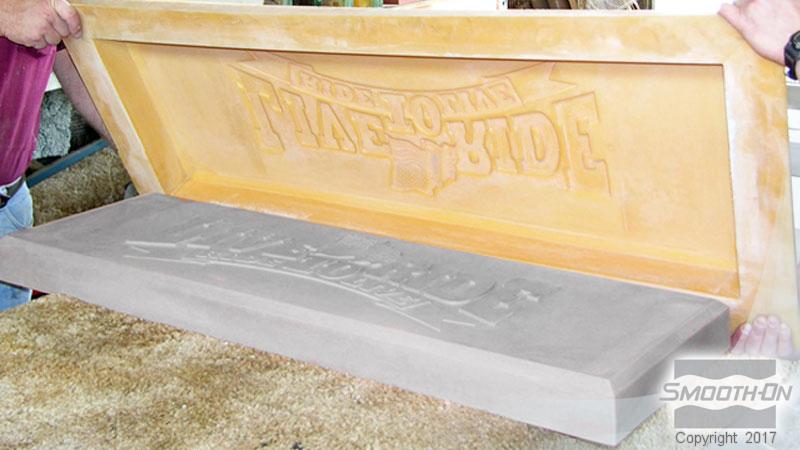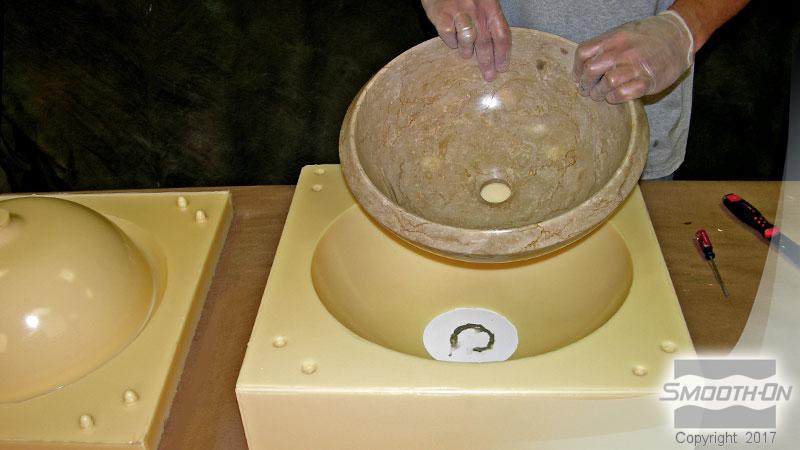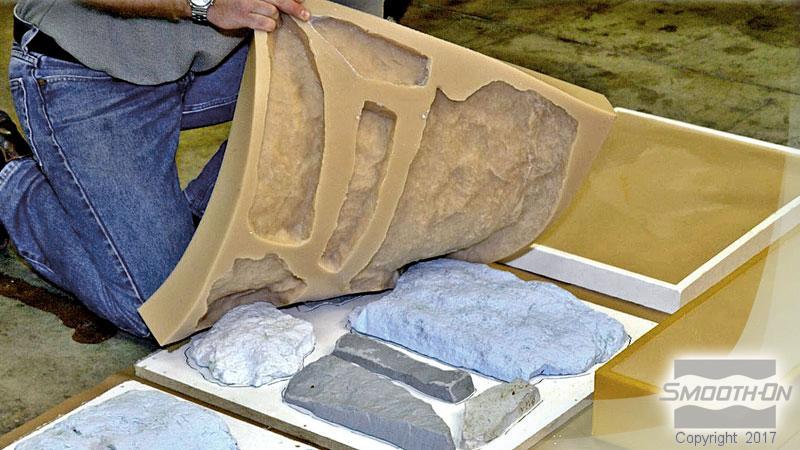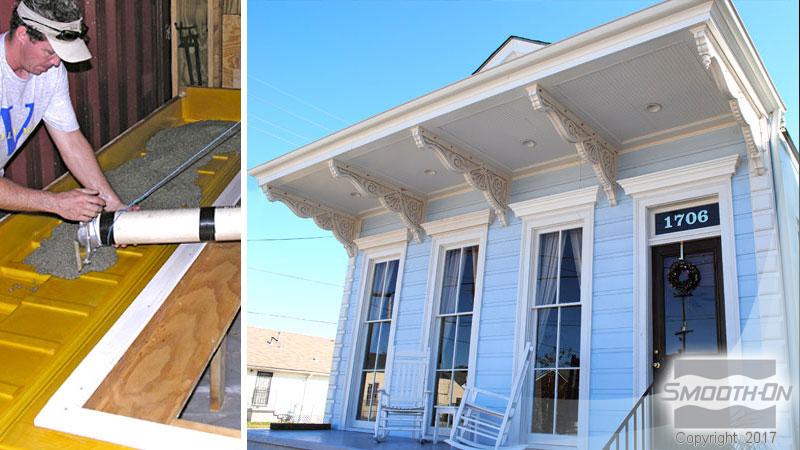VytaFlex® 20
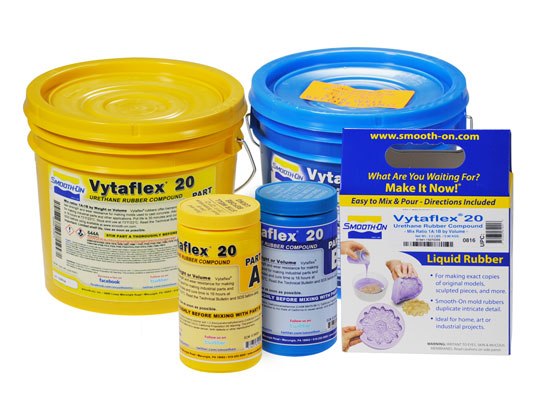
VytaFlex ™聚氨酯特别适用于浇注添加颜料的彩色混凝土。用VytaFlex ™系列聚氨酯制成的模具,可以浇注精确和颜色均匀的浇筑件。
说明
Preparation - Store and use at room temperature (73°F/23°C). These products have a limited shelf life and should be used as soon as possible. Use in a low humidity environment (below 50% RH). Mixing containers should have straight sides and a flat bottom. Mixing sticks should be flat and stiff with defined edges for scraping the sides and bottom of your mixing container. Good ventilation (room size) is essential. Wear safety glasses, long sleeves and rubber gloves to minimize contamination risk.
Some Materials Must Be Sealed - Urethanes are adhesive. To prevent adhesion between the rubber and model surface, models made of porous materials (gypsum plasters, concrete, wood, stone, etc.) must be sealed prior to applying a release agent. SuperSeal™ (available from Smooth-On) or One Step™ are fast drying sealers suitable for sealing porous surfaces without interfering with surface detail. Sonite Wax™or high-grade shellac is suitable for rough contours. A high quality Shellac is suitable for sealing modeling clays that contain sulfur or moisture (water based). Thermoplastics (polystyrene) must also be sealed with shellac or PVA. In all cases, the sealing agent should be applied and allowed to completely dry prior to applying a release agent.
Non-Porous Surfaces - Metal, glass, hard plastics, sulfur free clays, etc. require only a release agent.
Applying A Release Agent - A release agent is necessary to facilitate demolding when casting into or over most surfaces. Use a release agent made specifically for mold making (Universal™ Mold Release available from Smooth-On). A liberal coat of release agent should be applied onto all surfaces that will contact the rubber.
IMPORTANT: To ensure thorough coverage, lightly brush the release agent with a soft brush over all surfaces of the model. Follow with a light mist coating and let the release agent dry for 30 minutes. Because no two applications are quite the same, a small test application to determine suitability for your project is recommended if performance of this material is in question.
MEASURING & MIXING...
Liquid urethanes are moisture sensitive and will absorb atmospheric moisture. Mixing tools and containers should be clean and made of metal or plastic. Materials should be stored and used in a warm environment (73°F/23°C).
IMPORTANT: Stir Part B thoroughly before dispensing. After dispensing equal amounts of Parts A and B into mixing container, mix thoroughly for at least 3 minutes making sure that you scrape the sides and bottom of the mixing container several times.
If Mixing Large Quantities (16 lbs./7 kgs. or more) at one time, use a mechanical mixer (i.e. Squirrel Mixer or equal) for 3 minutes followed by careful hand mixing for one minute as directed above. Then, pour entire quantity into a new, clean mixing container and do it all over again.
Although this product is formulated to minimize air bubbles in your the cured rubber, vacuum degassing prior to pouring rubber will further reduce entrapped air.
POURING, CURING & PERFORMANCE...
For best results, pour your mixture in a single spot at the lowest point of the containment field. Let the rubber seek its level up and over the model. A uniform flow will help minimize entrapped air. The liquid rubber should level off at least 1/2” (1.3 cm) over the highest point of the model surface.
Curing - Allow rubber to cure a minimum of 16 – 24 hours at room temperature (73°F/23°C) before demolding. VytaFlex™ 10 should cure for at least 24 hours before demolding. Cure time can be reduced with mild heat or by adding Smooth-On “KickIt™” Cure Accelerator. Do not cure rubber where temperature is less than 65°F/18°C.
Post Curing - Optional . . . Following an overnight cure, heating the rubber to 150°F (65°C) for 4 to 8 hours will increase physical properties and performance.
Using The Mold - If using as a mold material, a release agent should be applied to the mold before each casting. AquaCon™ or In & Out™ II Concrete Release Concentrate (available from Smooth-On) is recommended for releasing concrete.
Performance & Storage - Fully cured rubber is tough, durable and will perform if properly used and stored. The physical life of the rubber depends on how you use it.
